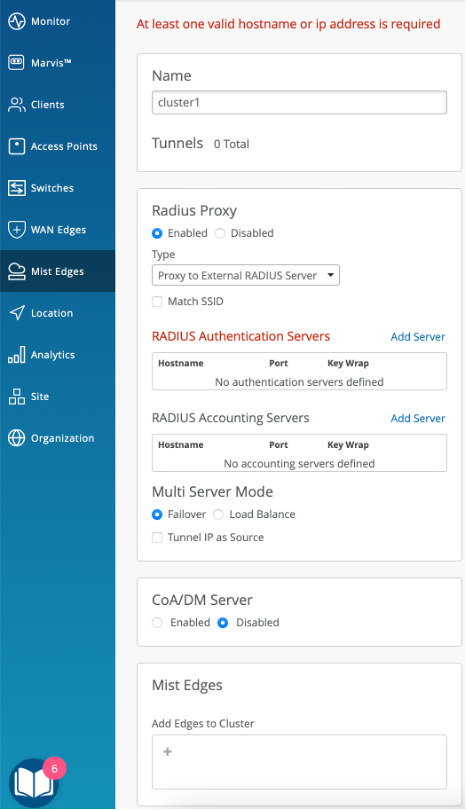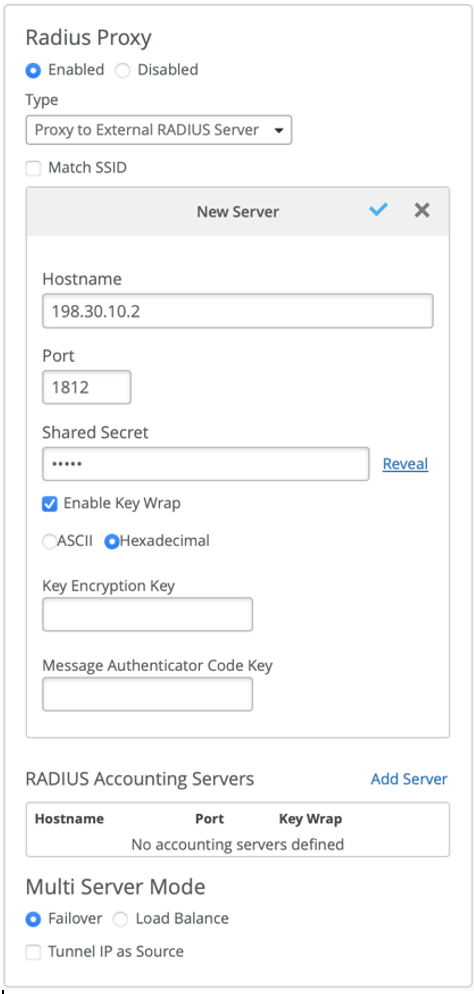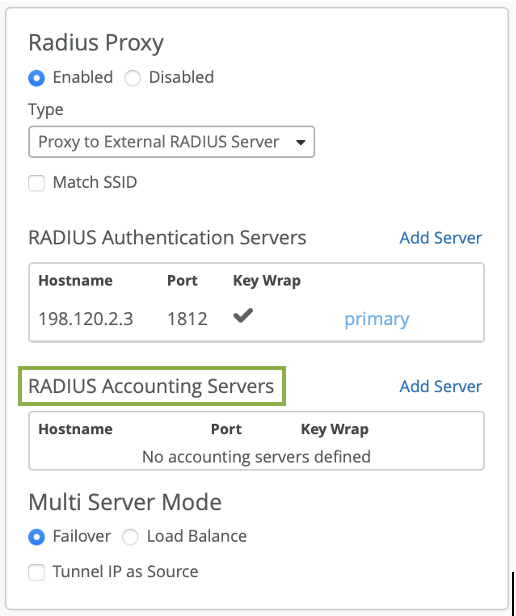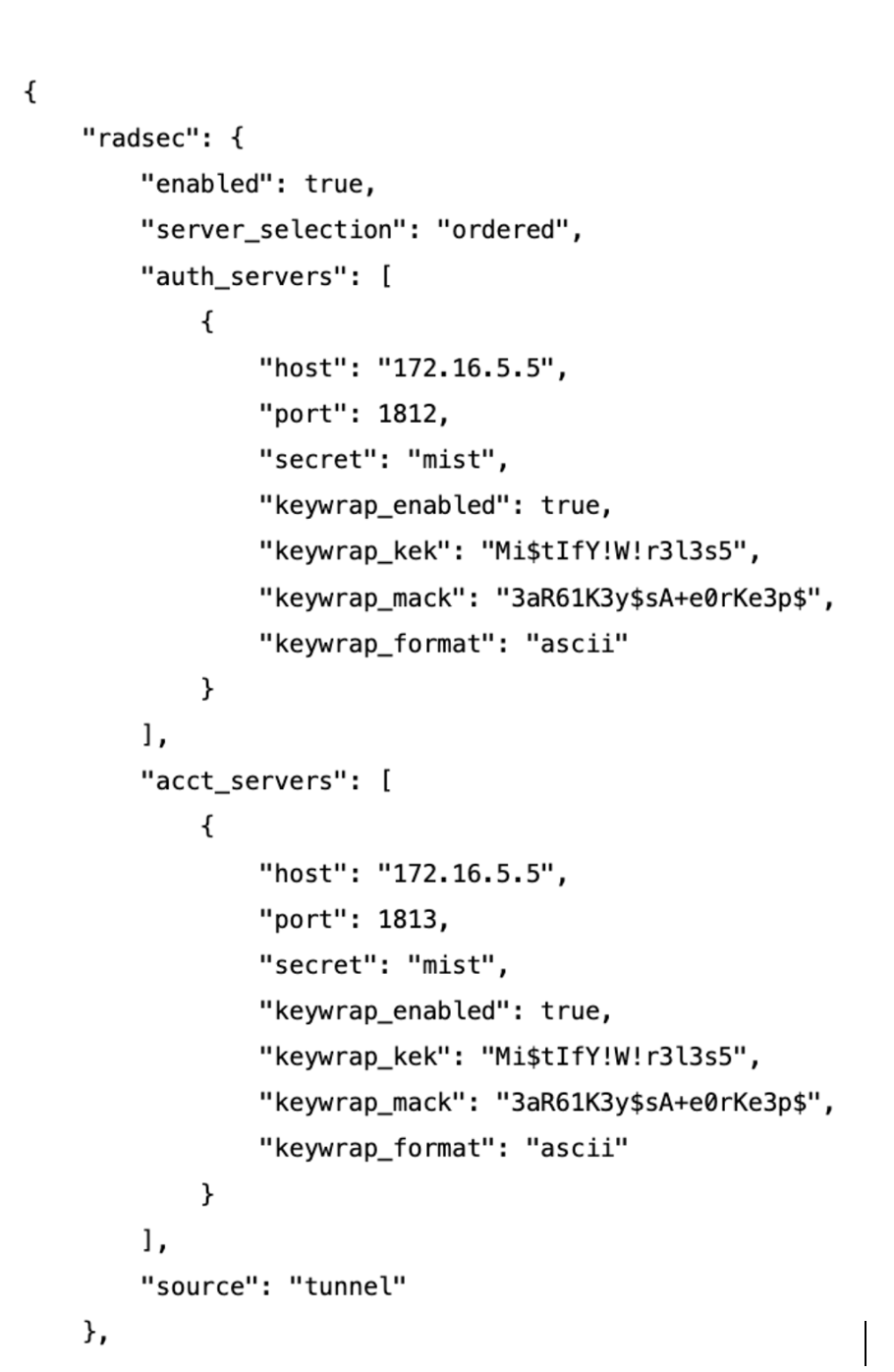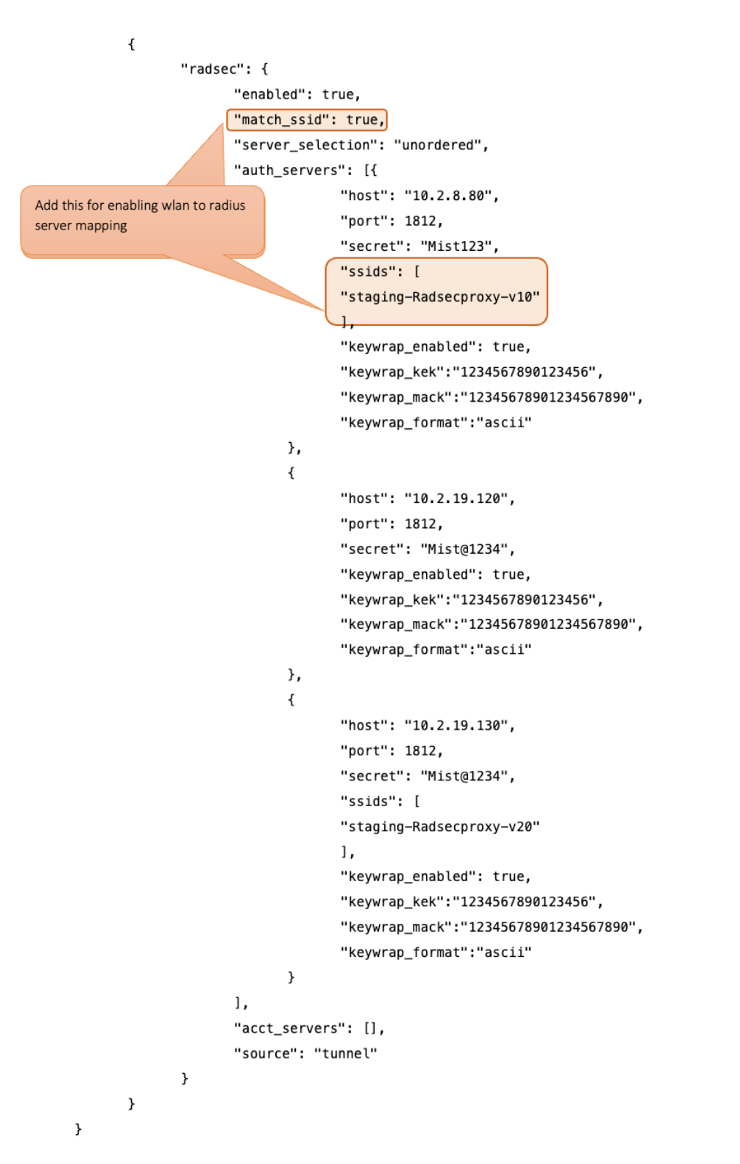How to Configure a RADIUS Proxy Server
This chapter provides information about configuring the Remote Authentication Dial-In User Service (RADIUS) proxy server for a Juniper Mist™ Edge appliance.
RADIUS Proxy Overview
In a Juniper Mist™ network, you can use access points (APs) as the source of Remote Authentication Dial-In User Service (RADIUS) Access-Request messages. With the RADIUS proxy feature, you can use your Juniper Mist Edge appliance as the source of RADIUS Access-Request messages instead.
It is impossible to add all the APs as individual clients in the RADIUS server in a large deployment scenario such as either of these:
-
Installation of a large number of Juniper Mist APs
-
Service set identifiers (SSIDs) with 802.1x authentication
When you set up a RADIUS proxy, instead of adding the APs as individual clients, you can use only one IP (the RADIUS proxy).
The RADIUS proxy acts as a server toward the wireless AP RADIUS clients and as a client toward the RADIUS servers.
Configure a RADIUS Proxy Server
Before you can configure a RADIUS proxy server to use in your Juniper Mist network, you must:
-
Claim Mist Edge and configure OOBM IP and Tunnel IP.
-
Configure Mist tunnels and map with Mist Edge cluster.
-
Configure WLAN with RADIUS authentication and forwarding to Mist tunnels.
The RADIUS proxy feature enables you to use a Juniper Mist Edge appliance as the source of RADIUS Access-Request messages instead of using the AP as the source. This means that you must configure the RADIUS server to allow the Juniper Mist Edge OOBM IP instead of adding individual APs as clients. Or, if you enable the tunnel IP as the source, you must configure the RADIUS server to allow the tunnel IP. These configuration options mean that you can bypass adding multiple individual APs to the RADIUS server for larger deployments.
Configure a RADIUS Server at the Organization Level
By default, a Juniper Mist Edge appliance is an Organization-level object. Juniper Mist access points (APs) from all sites can form tunnels with this object.
To configure a RADIUS server at the Organization level of the network hierarchy:
Configure WLAN Affinity for RADIUS Servers at the organization Level
On a wireless LAN (WLAN), you use different RADIUS servers in your deployment based on the service set identifier (SSID) name. For example, your deployment may use a public RADIUS server for an SSID named eduroam but a different RADIUS server for all the corporate SSIDs. Juniper Mist Edge enables this flexibility in its RADIUS proxy service. You can configure this service to forward RADIUS access (or accounting) requests to a specific network access control (NAC), server-based client with a unique SSID.
To configure WLAN affinity for a RADIUS server:
Configure a RADIUS Proxy Server at the Site Level
Before you can configure a RADIUS proxy server at the site level, you must configure the Mist tunnels. If you have not configured the tunnels, do so now, before you proceed with the configuration task. Refer to Deploy Mist Edge at the Site Level .
To transition from a legacy architecture, or where sites are large enough to host a Juniper Mist Edge, you need a distributed deployment. In such instances, you can assign Juniper Mist Edge appliances to a site and configure tunneling and the RADIUS proxy service for the access points (APs) at the site.
To configure a RADIUS proxy server at the site level:Configure WLAN Affinity for a RADIUS Server on the Site
On a wireless LAN (WLAN), you use different RADIUS servers in your deployment based on the service set identifier (SSID) name. For example, your deployment may use a public RADIUS server for an SSID named eduroam SSID but a different RADIUS server for all the corporate SSIDs. Juniper Mist Edge enables this flexibility in its RADIUS proxy service. You can configure this service to forward RADIUS access (or accounting) requests to a specific network access control (NAC), server-based client with a unique SSID.
Furthermore, if you use a Juniper Mist Edge appliance at the site level, you can configure a RADIUS server specifically for that appliance.
To configure WLAN affinity for a RADIUS server on the site edge:

